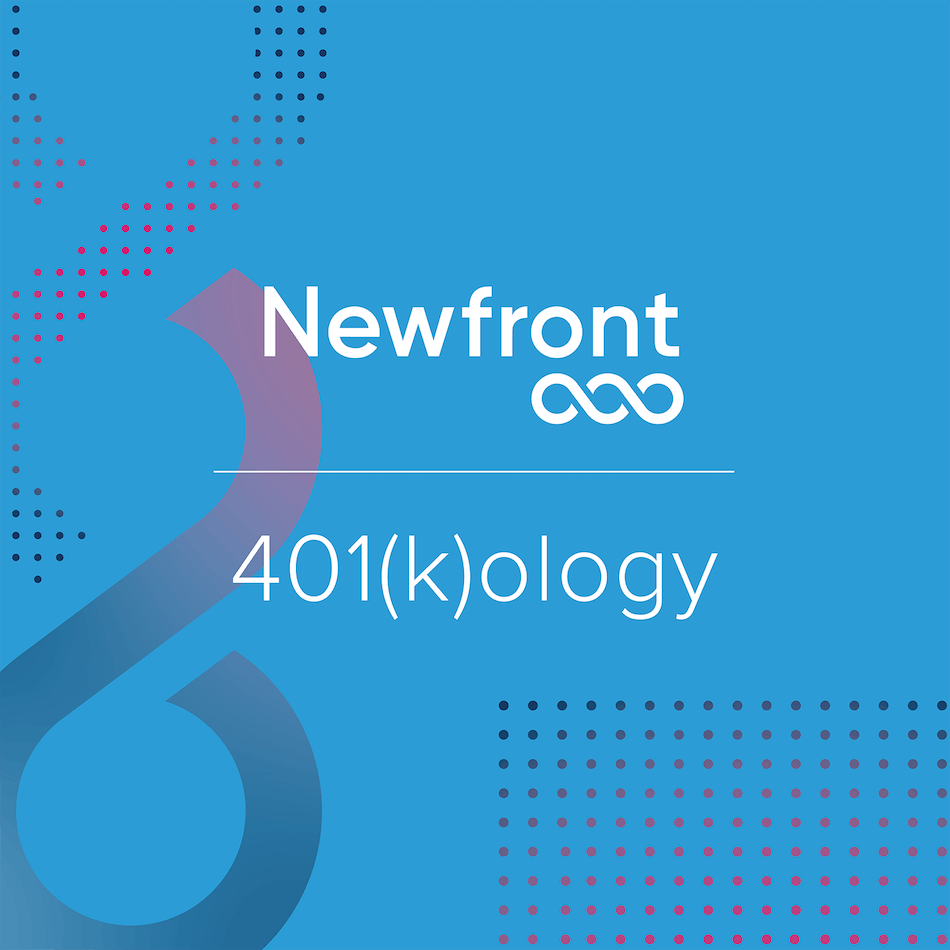401(k)ology - Participant Loans (Part 1)
By Joni L. Jennings, CPC, CPFA®, NQPC™ | Published July 22, 2022

The decision-making process to include loans in the 401(k) plan frequently comes down to a basic “yes/no” question when the employer is completing the plan’s adoption agreement. In many cases, employers are not considering the second-order questions surrounding what parameters should be in the loan program (e.g., only one loan outstanding, interest rate is prime plus 1% and minimum loan of $1,000). These are significant compliance and fiduciary related matters that employers should consider when deciding whether to include a participant loan program in the company 401(k) plan.
Of utmost importance is the obligation for plan sponsors to comply with the legal requirements governing participant loans. The failure to comply may lead to a taxable event for the borrowing participant and a prohibited transaction for the plan fiduciaries. Let’s start by reviewing the basics.
Three main rules that participant loans must follow:
Rule #1: Anti-alienation
Generally speaking, benefits provided under a 401(k) plan cannot be used or diverted for any purpose other than providing retirement benefits. An exception applies to participant loans that are secured by the participant’s vested account balance and which are not prohibited transactions.
Rule #2: Prohibited Transactions
Qualified plans may not loan or extend credit (i.e., a prohibited transaction) to anyone that is a disqualified person (e.g., participants, beneficiaries, and fiduciaries) unless there is an exemption. A prohibited transaction exemption (PTE) applies to participant loans if all of the requirements below are met.
The loan must:
Be available to all participants on an equal basis;
Be equally available to Highly Compensated Employees (HCEs) and Non-Highly Compensated Employees (NHCEs);
Be made according to plan provisions and the plan’s specific loan policy;
Have a reasonable interest rate; and
Be secured by the participant’s vested account balance.
Rule #3: Taxable Distributions
Any distribution to a participant from a 401(k) plan is generally taxable; however, participant loans will not be taxable if:
The maximum loan outstanding is the lesser of $50,000 or 50% of the participant’s vested balance; and
The loan is repaid within 5 years (may be more than 5 years if used for the purchase of the participant’s primary residence).
A participant loan that violates the prohibited transaction rules (#2) will result in a violation of the anti-alienation rules (#1) which may jeopardize the tax favored status of the plan and result in taxation to the participant (#3). Ouch!
Now that we have all of the “not so basic” rules out of the way, let’s discuss the plan’s 401(k) loan policy.
What Should be Included in the Plan’s Loan Policy?
The plan document will generally include a provision stating participant loans may be permitted and that if permitted, the plan fiduciaries are responsible for the establishment of a written loan policy. The loan policy (aka loan program) will dictate the specific parameters for participant loans offered in your 401(k) plan.
Your service provider will prepare the loan policy specific to your 401(k) plan (in conjunction with the plan documents) which outlines how your loan program will be administered. The loan policy is considered an extension of your plan document, must be in writing, must be provided to plan participants and should include the following provisions:
Procedures to apply for a loan (online or hardcopy)
Person(s) who has/have authority to administer the loan program (e.g., the Employer or Plan Administrator designated by a plan fiduciary)
Requirement for a signed promissory note from the participant
Type and amount of loan (general purpose, hardship only and/or primary residence)
Limitations for primary residence loans, if permitted
Approval/denial process for loan applications
How loan interest will be determined (i.e., tied to current prime rate, Wall Street Journal rate or bank rate)
Collateral used to secure a loan (e.g., 50% of vested balance)
Maximum number of loans a participant may have outstanding
How loan repayments will be made (after-tax payroll deduction, ACH or personal check)
Refinancing options or if refinancing not permitted
Minimum loan amount (typically $1,000)
Loan default and cure period
Origination and maintenance fees
Your first line of defense against participant loan errors is having a written loan policy and procedures established to ensure the loans are properly maintained. The procedures should address the coordination between the plan’s recordkeeper and the company’s payroll provider.
One of the more common loan errors is the failure to implement the loan repayments through payroll which can cause the repayment period to extend beyond the terms of the note or beyond the five-year maximum repayment period. The next 401(k)ology Blog (Part 2 of Participant Loans) will review correction methods in more detail.
Best Practices: _DOL regulations require that the loan program be provided to participants in the same manner as the Summary Plan Description (SPD). Many practitioners include the loan program within the SPD or as an addendum to the SPD to ensure the DOL disclosure requirements are met. _
What is the Promissory Note Between the Participant and the Plan?
When a participant takes a loan from the plan, the common thought is that the participant is taking the loan from themself. It is their money, right? Technically, the loan is being made from the plan in which they have an account and unless they have a distributable event, the money is not yet payable to the participant. Remember Rule #3 above, in order for the money to be loaned tax free to the participant, it must be repaid within five (5) years and the amount of the loan cannot exceed 50% of the vested account balance (capped at $50,000 with a 12-month lookback).
In order to take money out of a 401(k) account, the participant must sign a loan, note and security agreement, which is an enforceable agreement between the participant and the plan. Who has the duty to enforce the agreement? You guessed it, plan fiduciaries. When an active participant fails to make repayments according to the amortization schedule, a deemed distribution occurs – which is the tax consequence to the participant once the loan is in default. Why is it “deemed”? Well, the participant already has the money, so the outstanding balance which was not repaid is “deemed” a taxable event.
One of my favorite questions has always been “can I take money out of my 401(k) account to repay the loan?” Unfortunately, that is not an option. That is like moving $50 from the right pocket in my jeans to the left pocket and thinking I now have $100. It is the same account, so using the same money that is already in the account does not make the loan balance disappear.
How Does a Deemed Distribution of a Loan Impact the Plan?
At the plan level, the loan remains outstanding and owed to the plan pursuant to the enforceable agreement. The loan balance (with accrued interest) will be considered a plan asset until the participant terminates employment. Why is that important? In most cases, an active participant has not yet earned the right to a distribution from the plan; and, even if the loan is defaulted and taxed, that does not relieve the participant from the obligation to repay the loan.
From a fiduciary standpoint, that may prevent the employee from being able to take any subsequent loan from the plan. For example, if the loan policy allows only one participant loan outstanding, that participant already has one outstanding (it just happens to be in default) and cannot take another one.
What if the loan policy permits two loans outstanding? Should the plan fiduciary allow a participant who has already defaulted on one loan request another loan? Fiduciaries should tread carefully here, see Rule #2 above regarding prohibited transactions. A pattern of new loans issued after loan defaults could be viewed as circumventing the distribution provisions in the plan.
Would it be prudent to permit an active employee who has defaulted on a participant loan to take another one? Likely a facts and circumstances case and well beyond the scope of this blog. But it may be prudent to indicate in the loan policy that new loan requests will be denied if there is a prior defaulted loan.
Can an Active Participant Who Had a Loan Deemed Taxable Subsequently Repay the Loan?
Absolutely! In fact, an active participant who had a loan deemed distributed still has the obligation under the promissory note to repay the loan. If the employee wants to repay the loan, the loan repayments would be considered “after-tax” and must be tracked separately. Recall that the participant has already paid taxes on the outstanding loan balance; therefore, the separate after-tax accounting prevents the participant from being taxed on the same distribution twice. Any earnings in the separate after-tax account would be taxable upon a distribution.
How Does a Fiduciary Enforce Loan Repayments?
That is an interesting juxtaposition, especially in states like California and Virginia where ERISA does not preempt state law with regard to voluntary payroll deductions. In those states, employers must follow the employee’s direction to revoke voluntary payroll deductions if the employee instructs the employer to cease the deductions.
If the participant loan is contingent upon repayments via after-tax payroll deduction, as stated in the promissory note and the loan policy, then the fiduciary has a duty to collect the repayments; however, there may be practical considerations (such as state law) that prevents the fiduciary from enforcing the deductions through payroll.
Best Practices: _Fiduciaries should carefully consider how 401(k) loans will be repaid. To avoid repayment failures, many loan policies require repayment through after-tax payroll deduction. _
Any Additional Fiduciary Considerations Regarding 401(k) Loans?
Glad you asked! Both Internal Revenue Service (IRS) and Department of Labor (DOL) have enforcement authority in this area. The IRS enforces taxation (Rule #3 – impacts the participant), and DOL enforces prohibited transaction violations (Rule #2 – impacts the fiduciary).
Participant loans are a reportable item on the plan’s annual Form 5500, so that makes the plan vulnerable to IRS examinations and DOL investigations. Deemed distributions of participant loans are a separate line item on the Schedule H to the Form 5500. If the plan must report deemed distributions on the Form 5500, it may be a red flag response increasing the likelihood of an audit.
The good news is that IRS offers (newly improved) solutions for correcting participant loan errors through self-correction under the Employee Plans Compliance Resolution System (Rev. Proc. 2021-30) and DOL offers fiduciary relief under the Voluntary Fiduciary Correction Program. We will review some common loan errors in 401(k)ology Blog - Part 2 of Participant Loans.
Conclusion
If you are considering adding a loan program or currently offer loans in your 401(k) plan, you should be aware of the rules and should have established policies and procedures in place to properly maintain the loan program. Our retirement service team at Newfront is available to assist you with any questions regarding participant loans or other retirement plan related questions that may arise.
Email us at 401kHelp@newfront.com
Helpful Quick Links
DOL Voluntary Fiduciary Correction Program
IRS Employee Plans Compliance Resolution System
IRS Retirement Topics: Plan Loans

Joni L. Jennings, CPC, CPFA®, NQPC™
Chief Compliance Officer, Newfront Retirement Services, Inc.
Joni Jennings, CPC, CPFA®, NQPC™ is Newfront Retirement Services, Inc. Chief Compliance Officer. Her 30 years of ERISA compliance experience expands value to sponsors of qualified retirement plans by offering compliance support to our team of advisors and valued clients. She specializes in IRS/DOL plan corrections for 401(k) plans, plan documents and plan design.


